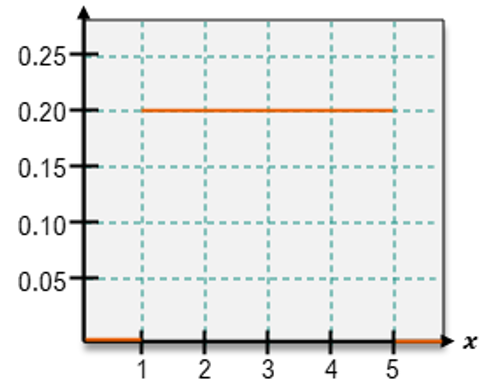Determine if each curve (in orange) is a valid probability density function (i.e. if the total area under the function = 1)
Table of contents
- 1. Introduction to Statistics53m
- 2. Describing Data with Tables and Graphs2h 1m
- 3. Describing Data Numerically2h 8m
- 4. Probability2h 26m
- 5. Binomial Distribution & Discrete Random Variables3h 28m
- 6. Normal Distribution & Continuous Random Variables2h 21m
- 7. Sampling Distributions & Confidence Intervals: Mean3h 37m
- Sampling Distribution of the Sample Mean and Central Limit Theorem19m
- Distribution of Sample Mean - Excel23m
- Introduction to Confidence Intervals22m
- Confidence Intervals for Population Mean1h 26m
- Determining the Minimum Sample Size Required12m
- Finding Probabilities and T Critical Values - Excel28m
- Confidence Intervals for Population Means - Excel25m
- 8. Sampling Distributions & Confidence Intervals: Proportion1h 33m
- 9. Hypothesis Testing for One Sample3h 32m
- 10. Hypothesis Testing for Two Samples4h 49m
- Two Proportions1h 12m
- Two Proportions Hypothesis Test - Excel28m
- Two Means - Unknown, Unequal Variance1h 2m
- Two Means - Unknown Variances Hypothesis Test - Excel12m
- Two Means - Unknown, Equal Variance15m
- Two Means - Unknown, Equal Variances Hypothesis Test - Excel9m
- Two Means - Known Variance12m
- Two Means - Sigma Known Hypothesis Test - Excel21m
- Two Means - Matched Pairs (Dependent Samples)42m
- Matched Pairs Hypothesis Test - Excel12m
- 11. Correlation1h 24m
- 12. Regression1h 59m
- 13. Chi-Square Tests & Goodness of Fit2h 31m
- 14. ANOVA2h 1m
6. Normal Distribution & Continuous Random Variables
Uniform Distribution
Struggling with Statistics for Business?
Join thousands of students who trust us to help them ace their exams!Watch the first videoMultiple Choice
Determine if each curve (in orange) is a valid probability density function (i.e. if the total area under the function = 1)

A
Yes, because the area under the curve equals 1
B
No, because the area under the curve = 8=1
C
No, because the curve does not touch the x-axis
D
Yes, because the area under the curve is slightly more than 1.
 Verified step by step guidance
Verified step by step guidance1
Step 1: Understand the definition of a probability density function (PDF). A valid PDF must satisfy two conditions: (1) The function must be non-negative for all values of x, and (2) The total area under the curve must equal 1.
Step 2: Analyze the graph provided. The orange curve is a horizontal line at y = 0.2 between x = 1 and x = 5. Outside this interval, the curve touches the x-axis, meaning the function is zero.
Step 3: Calculate the area under the curve. Since the curve is constant at y = 0.2 over the interval [1, 5], the area can be calculated using the formula for the area of a rectangle: Area = height × width. Here, height = 0.2 and width = 5 - 1 = 4.
Step 4: Verify if the total area equals 1. Substitute the values into the formula: Area = 0.2 × 4. Check if this result equals 1 to determine if the curve is a valid PDF.
Step 5: Conclude based on the calculation. If the area equals 1, the curve is a valid PDF. If the area does not equal 1, the curve is not a valid PDF.

 6:06m
6:06mWatch next
Master Uniform Distribution with a bite sized video explanation from Patrick
Start learningRelated Videos
Related Practice
Multiple Choice
Uniform Distribution practice set


